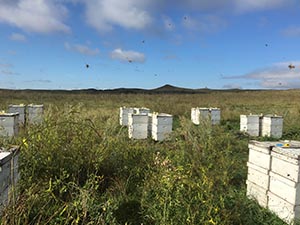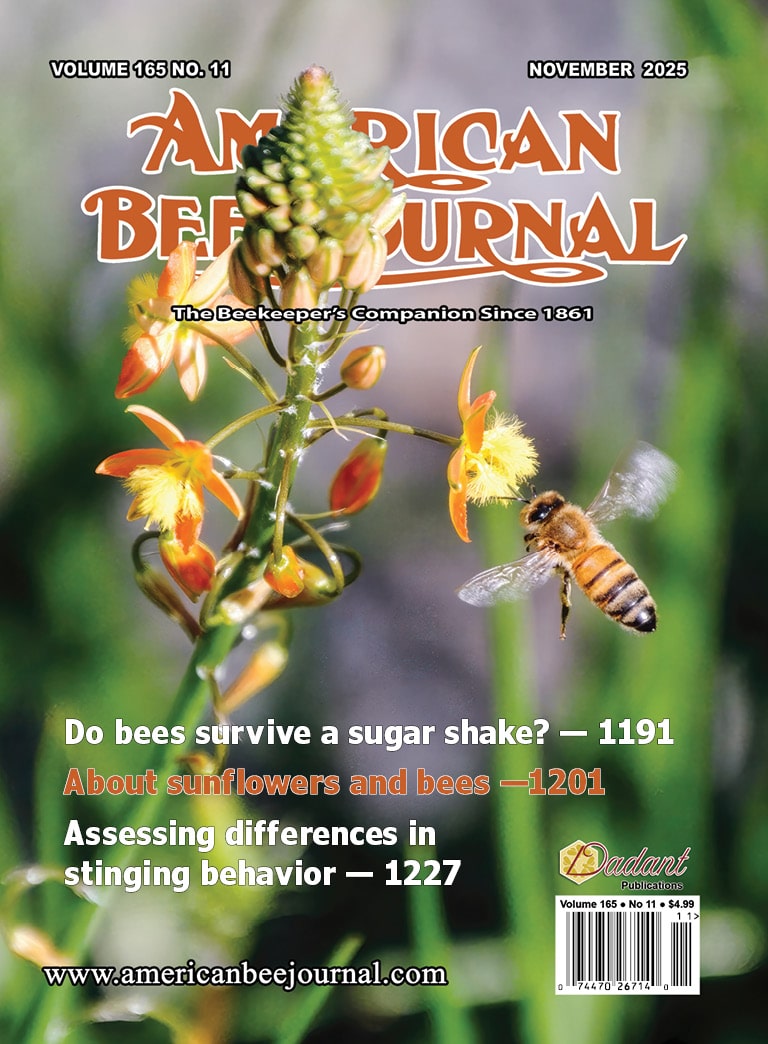Notes from the Lab
When is pollinating almond actually profitable for beekeepers?

The California almond crop is worth $2.2 billion and is estimated to add an additional $21.5 billion to the economy via 104,000 jobs in production, processing, manufacturing, and marketing. Notably, this multibillion-dollar industry is more or less completely reliant on managed honey bees since pollination is required to produce almonds and there are almost no wild bees in California almond orchards.
By 1973, the pollination needs of California almonds exceeded what could be serviced by honey bee colonies kept in the state. At first, beekeepers from neighboring states kicked in and sent a few hives to help pollinate the almonds. But demand continued to grow. Currently, an estimated 1.5 million hives (~60% of all colonies in the United States) are moved into the almond growing regions of California to pollinate the nearly 1 million acres (4,000 km2) of nut-bearing trees each February.
This isn’t just a service for almond growers — it’s also big business for beekeepers. The average rental fee paid by almond growers is currently over $160/colony. If you do the math, that means total revenue received by United States beekeepers providing pollination services to almond is more than $240 million per year. So, with all this money passing hands, you’d think beekeepers were making a handsome profit doing almond pollination, right? This is the topic for our twenty-fifth “Notes from the Lab,” where we highlight “The economics of honey bee (Hymenoptera: Apidae) management and overwintering strategies for colonies used to pollinate almonds,” written by Gloria DeGrandi-Hoffman and colleagues and published in the Journal of Economic Entomology [toz213 (2019)].
The February bloom is a particular challenge for almond pollination. That’s because winter can be a difficult time for honey bees in the U.S. It’s typically the time of year when greatest colony losses occur, and for colonies that are still going strong, it’s when they’re smallest and just beginning to build in most regions of the U.S. Thus, beekeepers who pollinate almond typically prepare their bees in one of two ways.
First, many beekeepers move their bees to warmer climates in southern states or California, where the bees can forage and rear brood throughout the winter. However, there are challenges with this practice. Floral resources can be insufficient, so beekeepers oftentimes feed sucrose and/or protein supplements. Though these supplements can meet some nutritional requirements, they aren’t perfect, and malnutrition and increased incidence of disease can occur. Varroa and its associated viruses can also exacerbate the effects of nutritional stress. And since varroa is a brood parasite that can migrate into colonies on foragers, particularly in the fall, it can be a major problem for beekeepers who acquire excess mites in the fall and maintain brood throughout the winter.
Alternatively, many beekeepers put colonies into cold storage facilities in the fall. While there’s a financial cost of renting cold storage space, there are also potential advantages to this management strategy. Colonies put into cold storage after a fall miticide treatment may avoid being re-infested with varroa, and bees clustered inside the hive have greater longevity and require fewer resources. Thus, the total cost of overwintering bees in cold storage may be lower compared to overwintering bees in warmer areas if those warm-area colonies need supplemental feeding or additional mite treatments, or if cold storage reduces winter losses.
With these possibilities in mind, DeGrandi-Hoffman and colleagues’ study set out to test which overwintering management style (if any) was profitable for beekeepers conducting almond pollination. To do this, they first moved 95 colonies to Texas after almond pollination, split and requeened them to make 190 colonies, and fed the new colonies sucrose and a protein supplement (cost = $7,443; see Fig. 1).
In June, all colonies were inspected and moved to North Dakota for the honey flow; a common practice among many commercial beekeepers. From June until August, the colonies grew and accumulated honey (cost = $813 for supers) and were given a miticide treatment approved for use during the honey flow (HopGuard II – BetaTec Hop Products, Washington, DC; cost = $1,752 including labor, transportation and materials). In August, 12,160 lbs. of honey (77 lbs. per hive) were removed at a total cost of $2,432 in labor and other extraction expenses. In the year of the study, unprocessed ….


